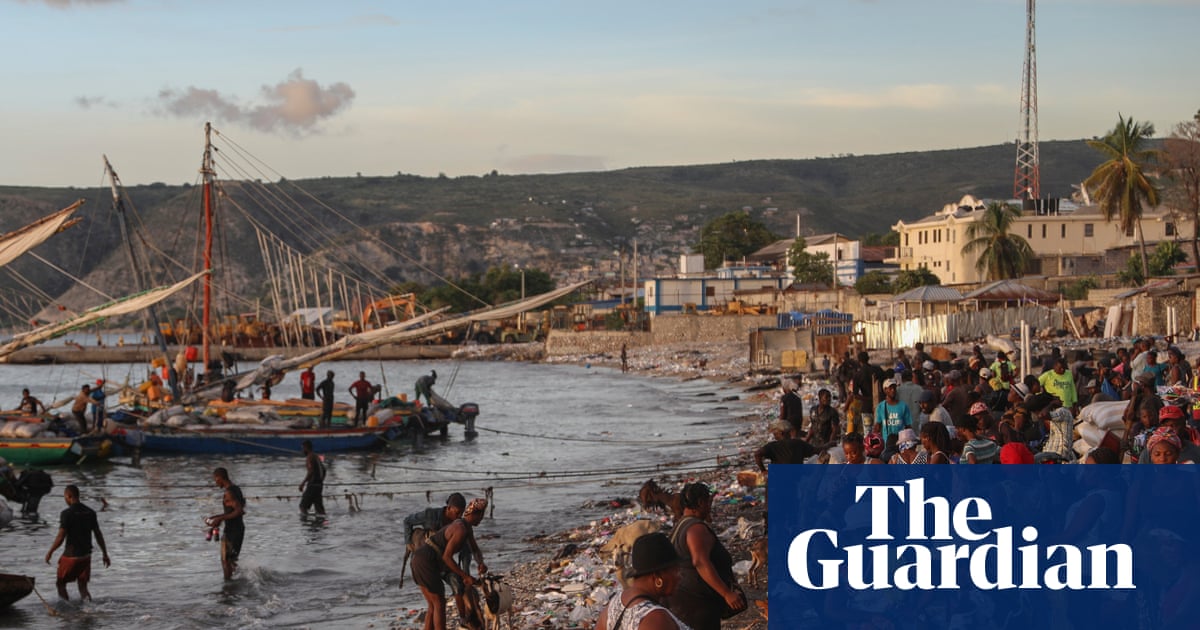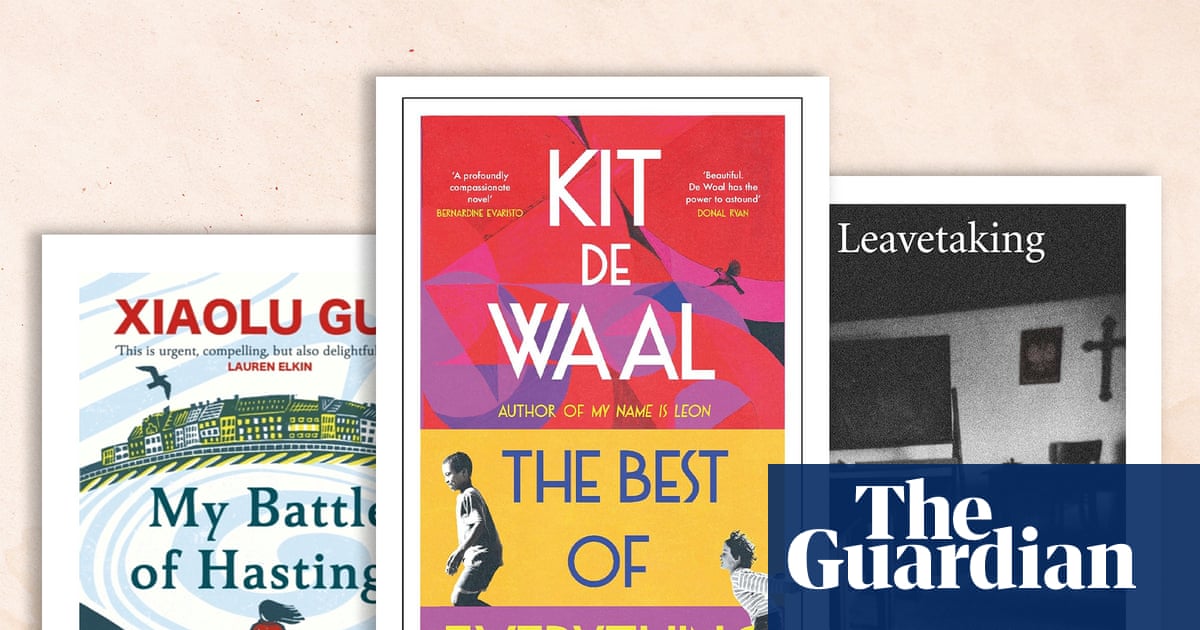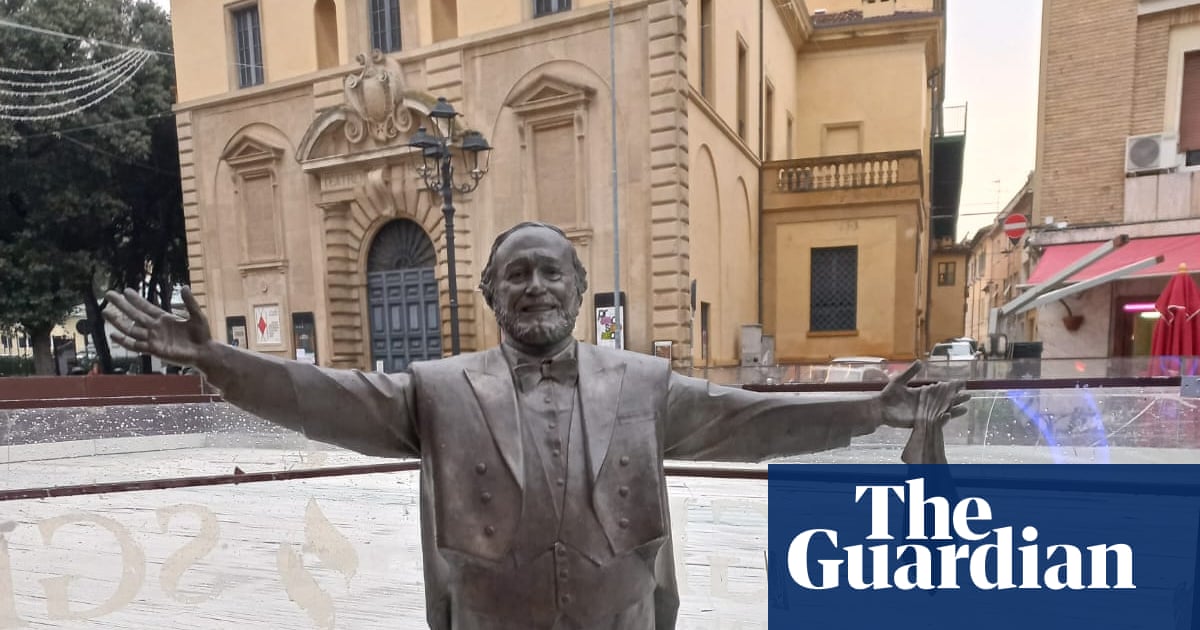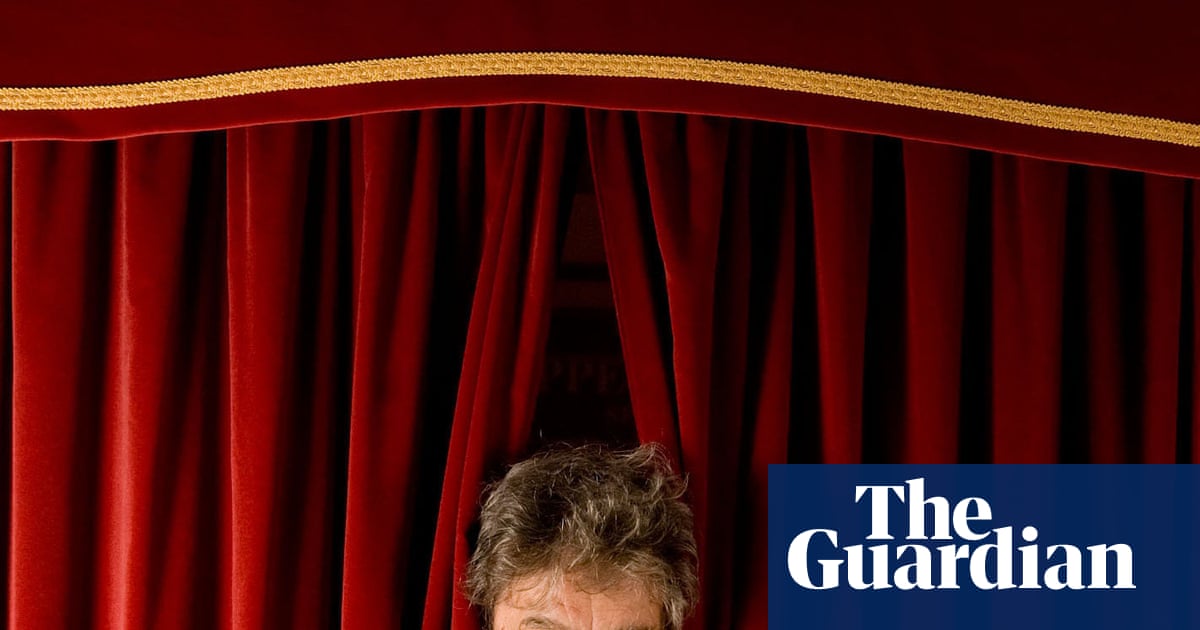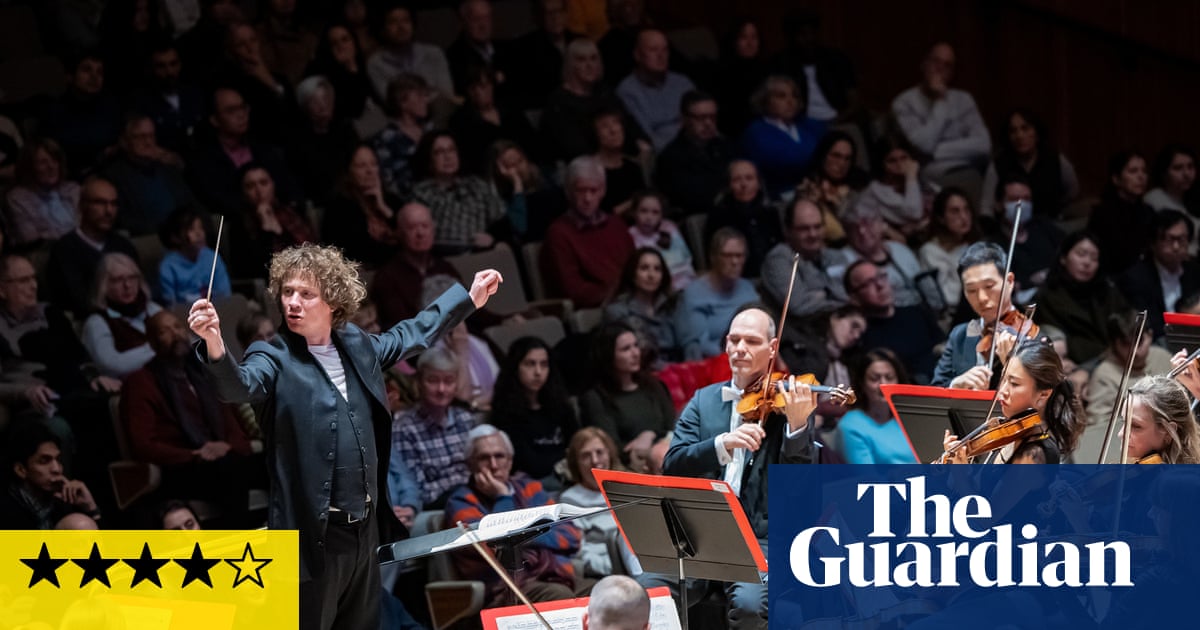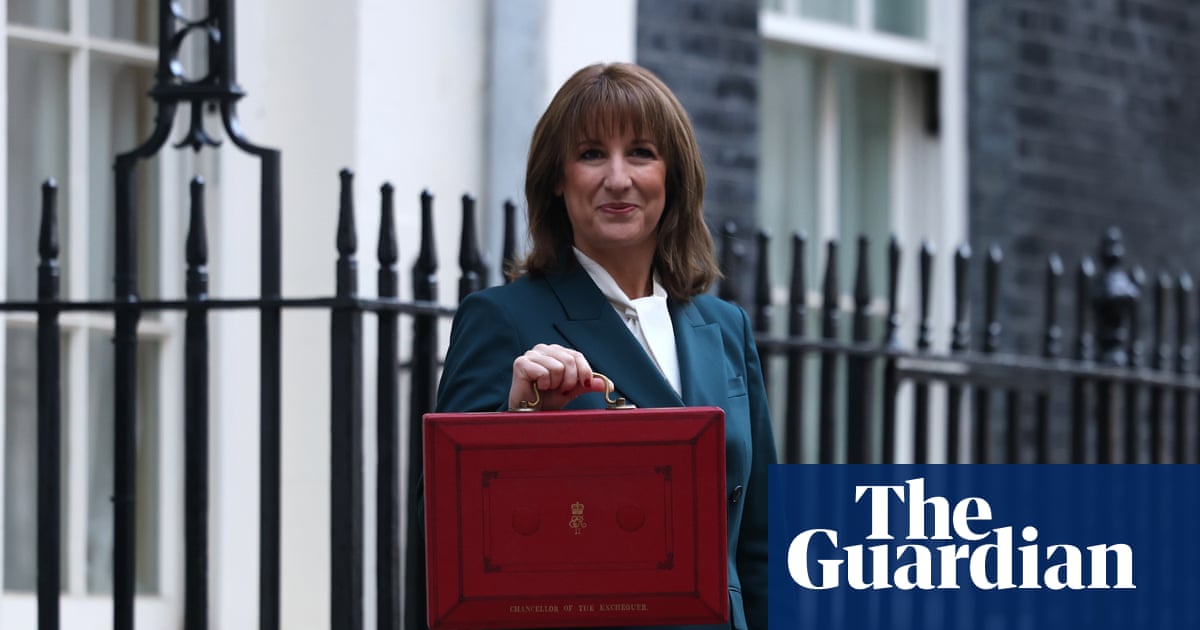On a quiet street in central Kyiv, where monuments are wrapped in sandbags and shrapnel shields, the Khanenko Museum has opened an exhibition about Africa. Its title, Africa Direct, is a statement and a method: a call to approach the continent not through inherited filters (Soviet, colonial, or western) but through direct engagement with its histories, philosophies and living cultures.
The museum, which holds one of the most distinguished private collections of the 19th century in eastern Europe, was badly damaged when a Russian missile struck nearby in October 2022. Windows and show cases were shattered and the glass ceiling collapsed. Yet the museum’s collections were unharmed: Byzantine icons, Islamic artwork, and old master paintings had already been secured, some of them safely evacuated to partner institutions in Paris, Vilnius, Warsaw and The Hague.
The museum did not close. Its staff kept the institution open, empty but active, organising lectures, readings, and mental health workshops with the neighbouring hospital. Some of the glass fragments were later turned into brooches by a local goldsmith, offered as a sign of endurance to guests and friends.
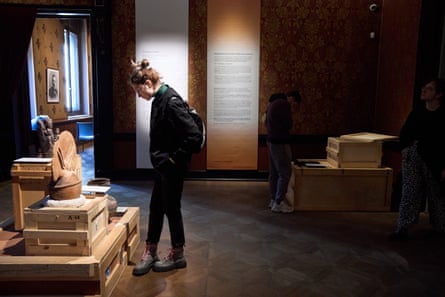
Now, on the third anniversary of the attack, Africa Direct has opened in the same building, this time filled with objects and voices from another continent. Curated by Yulia Fil and Daria Sukhostavets, and initiated by the deputy director Hanna Rudyk, the exhibition brings together 40 works from 18 African countries, collected over two decades by the Ukrainian couple Tetyana Deshko and Andriy Klepikov, who have worked extensively in African public health. Historical artefacts sit alongside works by contemporary artists such as the Ghanaian-British artist Adelaide Damoah, Christian Nyampeta (Rwanda/the Netherlands/US), Seyni Awa Camara (Senegal) and Esther Mahlangu (South Africa).
No attempt is made to emulate the encyclopaedic ethnographic displays of other European museums. Instead, the selection privileges a sensuous engagement with African art and material culture: things made to be touched, carried, embraced. At the heart of the exhibition is a group of magnificent ceramic vessels, some serving, in their living worlds, as temporary homes for ancestors. As in all museums, one cannot help but wonder what these pieces are doing here, far from the ecologies and relationships that once gave them meaning. Yet the curator has chosen to resist the usual distance imposed by glass, placing the works on simple wooden boxes, an act of humility that suggests fragility and protection.
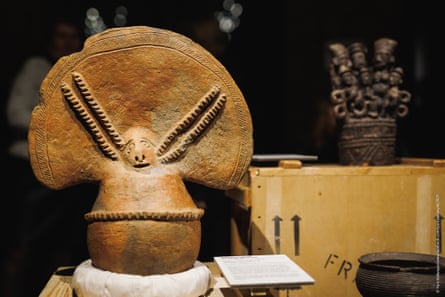
One large terracotta piece from north-western Nigeria is particularly striking in this Ukrainian context. Caught between alertness and fear, half vessel, half vegetal lobe, it bears on its body the outlines of a face in relief. Its wide, deeply carved eyes stare into an invisible distance with almost hallucinatory intensity. The slightly open mouth hovers between a cry and a breath, as if eternally about to speak or exhale. Notched forms radiating from this face, like arms, horns, or antennae, give it a cosmic presence. It was made by women of the Dakakari people for funerary purposes, and carries in its clay the memory of care, mourning and continuity.
Nearby, an angel painted on the parchment of an early 20th-century Christian Ethiopian healing scroll also stares with wide eyes, meant, as the catalogue explains, to protect from evil the body and soul of whoever met its gaze. In Ukraine today, la patience des objets feels less historical than human.
The exhibition also reflects a decisive turn in Ukraine’s cultural thinking: an acknowledgment that decolonisation is not only a geopolitical struggle but also an epistemic one.
At the opening, Anika Johnson, a longtime resident of Ukraine and representative of the African community there, drew a parallel between African and Ukrainian experiences of oppression and resistance. “We are both freedom fighters,” he said. “Africa fought colonialism, Ukraine fights now for its freedom.” The words resonated beyond diplomacy or solidarity. They articulated a shared vocabulary of independence that connects two histories often seen as separate.
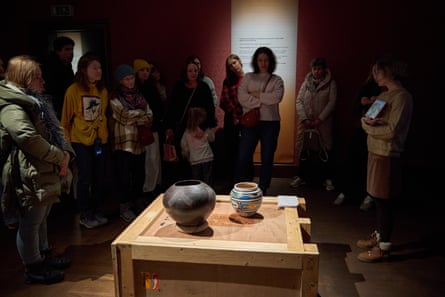
The exhibition is conceived as an experiment in intellectual realignment, a reflection on how museums can redefine their role in times of resistance. As Rudyk put it in the catalogue, Ukraine has long looked westward and inward; turning southward now is a way to refuse isolation and to enter a global conversation on its own terms. Decolonising the museum, she argues, means not only revising narratives of art and empire but addressing questions of racism and rethinking how knowledge itself is produced and shared.
after newsletter promotion
This cultural initiative unfolds, however, against a background that complicates any easy idealism. In August 2024, Mali’s military government abruptly cut diplomatic ties with Ukraine after accusing it of covert involvement in fighting in the north of the country, a claim denied by Kyiv but widely circulated in the media. The episode revealed how fragile and politically charged relations between Ukraine and several African states have become, especially where Russian influence is strong. Against that reality, Africa Direct stands out as an autonomous gesture by art historians, scholars, and curators seeking a different, more reciprocal language of exchange.
That this process is unfolding under bombardment gives it a particular gravity. Most of the museum’s staff are in their 20s and 30s. Many returned from abroad out of commitment to their institution, their city, and their sense of purpose. In their hands and eyes, culture is not a luxury of peace but a form of civic resilience and critical reflection.
On the night after the opening, the alarms sounded again. Messages flashed across phones: “Ballistic”, “Take shelter”. “Now it’s drones.” Then, hours later: “All clear.” By morning, half of Kyiv was without electricity and water. Yet the city’s rhythm resumed: coffee, children, emails, plans, reconstruction. Life continues in overlapping layers, as does culture. Between darkness and daylight, between war and work, the Khanenko Museum insists on a principle that is neither tragic nor heroic but necessary: continuity, intelligence, and a critical engagement with inherited narratives.
-
Africa Direct is at the Khanenko Museum, Kyiv, until 11 January 2026

 1 month ago
22
1 month ago
22



